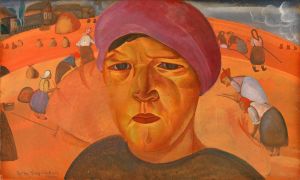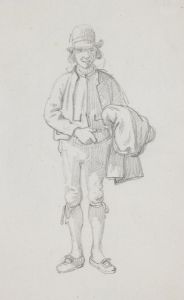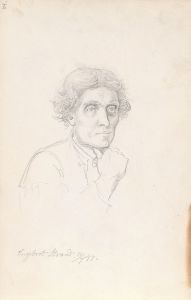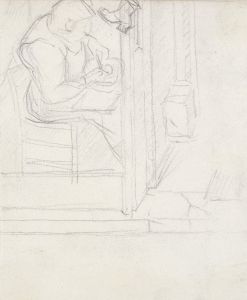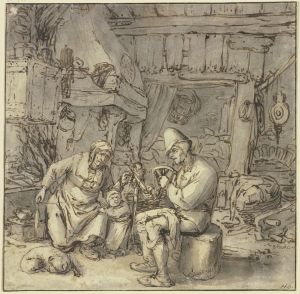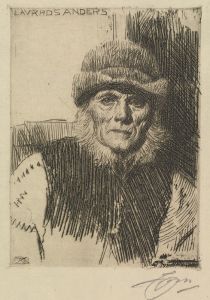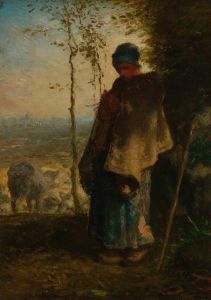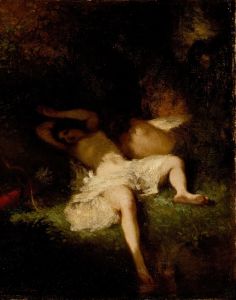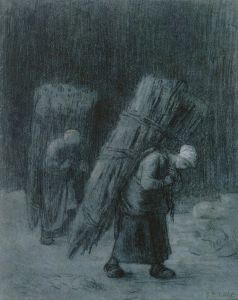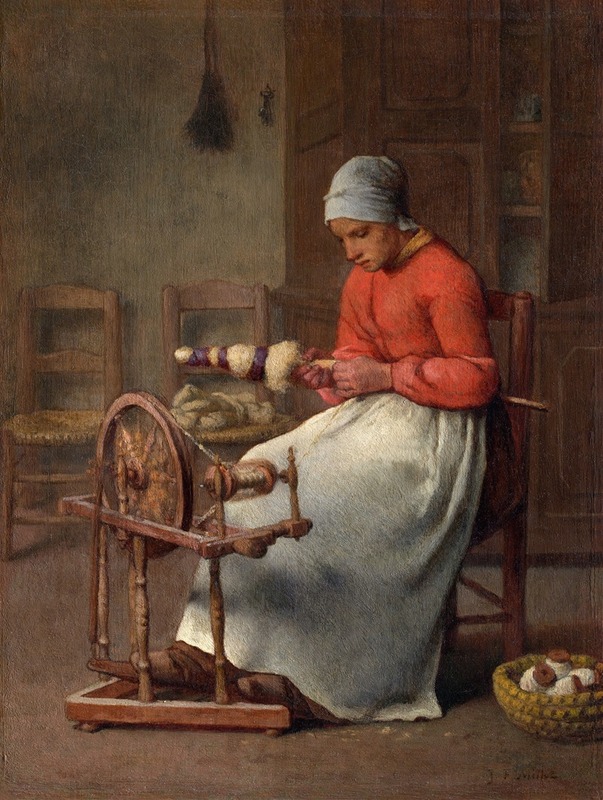
Woman Spinning
A hand-painted replica of Jean-François Millet’s masterpiece Woman Spinning, meticulously crafted by professional artists to capture the true essence of the original. Each piece is created with museum-quality canvas and rare mineral pigments, carefully painted by experienced artists with delicate brushstrokes and rich, layered colors to perfectly recreate the texture of the original artwork. Unlike machine-printed reproductions, this hand-painted version brings the painting to life, infused with the artist’s emotions and skill in every stroke. Whether for personal collection or home decoration, it instantly elevates the artistic atmosphere of any space.
"Woman Spinning" is a painting by the French artist Jean-François Millet, who is renowned for his depictions of peasant life. Millet was a prominent figure in the Realism art movement, which emerged in France in the mid-19th century. This movement focused on portraying everyday life and ordinary people with a sense of authenticity and without idealization.
Jean-François Millet was born on October 4, 1814, in Gruchy, a hamlet in the commune of Gréville-Hague, Normandy, France. He grew up in a rural environment, which profoundly influenced his later works. Millet's art often reflects his deep empathy for the rural poor and his intimate knowledge of their daily lives.
"Woman Spinning" is one of Millet's many works that capture the essence of rural labor. The painting depicts a woman engaged in the act of spinning, a common domestic task in rural communities during the 19th century. The woman is shown seated, focused on her work, with a spinning wheel in front of her. The simplicity and quiet dignity of the scene are characteristic of Millet's approach to his subjects.
Millet's technique in "Woman Spinning" is notable for its use of earthy tones and a subdued palette, which contribute to the painting's overall sense of realism and humility. The composition is straightforward, emphasizing the woman's labor and the tools of her trade. This focus on the mundane aspects of rural life was a deliberate choice by Millet, who sought to elevate the status of peasant labor through his art.
The painting reflects Millet's broader artistic philosophy, which was to portray the nobility and inherent value of the peasant class. Unlike many of his contemporaries who idealized rural life, Millet's work is grounded in the reality of the hard work and perseverance required to sustain it. His paintings often convey a sense of respect and admiration for his subjects, highlighting their resilience and strength.
"Woman Spinning" is part of a larger body of work by Millet that includes other famous paintings such as "The Gleaners" and "The Angelus." These works collectively underscore his commitment to depicting the lives of the rural poor with honesty and compassion. Millet's influence extended beyond his lifetime, impacting later artists and movements, including Vincent van Gogh and the Barbizon School.
Jean-François Millet passed away on January 20, 1875, in Barbizon, France. His legacy endures through his contributions to the Realism movement and his poignant portrayals of rural life. "Woman Spinning" remains a testament to his skill and his dedication to capturing the dignity of everyday labor.
In summary, "Woman Spinning" by Jean-François Millet is a significant work that exemplifies the artist's focus on rural life and his commitment to realism. Through his detailed and respectful portrayal of a woman engaged in spinning, Millet offers a glimpse into the daily lives of the peasant class, celebrating their hard work and resilience.





